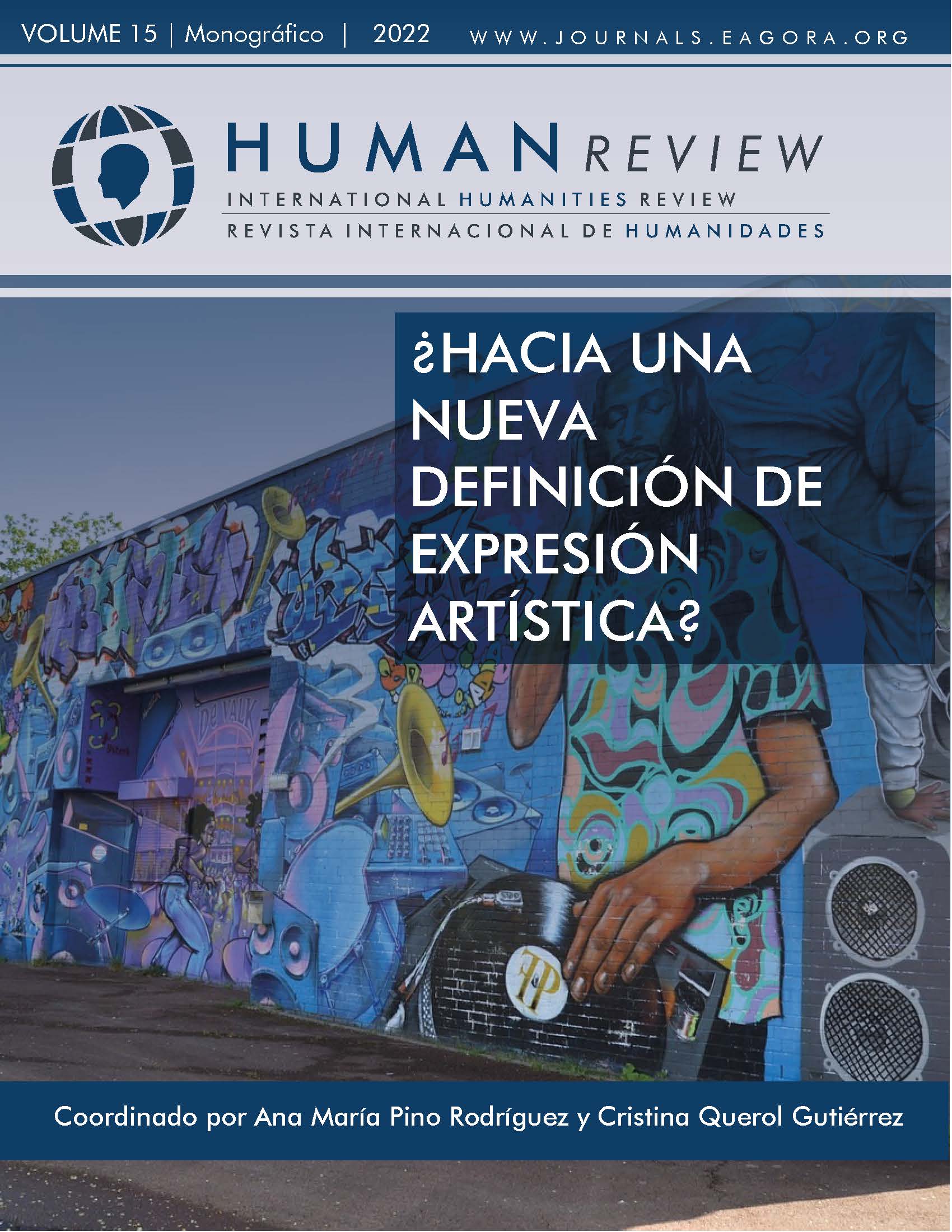Musical performance: approaches from expert practice
DOI:
https://doi.org/10.37467/revhuman.v11.4345Keywords:
Musical performance, Performer, Classical music, Performing arts, Expressiveness, Creativity, AudienceAbstract
This research aims to deepen the knowledge of the factors involved and the processes that take place in musical performance, based on the conceptions and expert knowledge of five renowned classical music performers.
The methodological approach applied is qualitative and uses the semi-structured in-depth interview as a data collection technique.
The results obtained suggest that expressiveness, sound, creativity, and charisma are necessary qualities in a performer of excellence. It is concluded that the performer is a constructor of meaningful discourses who always seeks to establish emotional bonds with the audience.
References
Boyd, J., & George-Warren, H. (1992). Musicians in tune: Seventy-five contemporary musicians discuss the creative process. Fireside.
Burwell, K. (2005). A degree of independence: Teachers’ approaches to instrumental tuition in a university college. British Journal of Music Education, 22(3), 199-215. https://doi.org//10.1017/S0265051705006601
Clarke, E. (2008). Comprender la psicología de la interpretación. En J. Rink (Ed.), La interpretación musical (pp.81-94). Alianza Música.
Copland, A. (1994). Cómo escuchar la música (2ª ed.). Fondo de Cultura Económica.
Davidson, J. W. (2008). El desarrollo de la habilidad interpretativa. En J. Rink (Ed.), La interpretación musical (pp. 111-124). Alianza Música.
García Trabucco, A. G., Silnik, M., & Yurcic, A. (2004). Entrando a la música de cuerpo entero: Un enfoque cognitivista para la enseñanza inicial de los instrumentos. Huellas. Revista de Investigación de la Facultad de Artes y Diseño 4, 34-47. https://bdigital.uncu.edu.ar/68
Garriga, M. (1990). Estética de la Música. Tenora Edicions Musicals.
Juslin, P. N., & Laukka, P. (2004). Expression, perception, and induction of musical emotions: A review and a questionnaire study of everyday listening. Journal of New Music Research 33(3), 217–238. https://doi.org/10.1080/0929821042000317813
Juslin, P. N. (2005). From mimesis to catharsis: Expression, perception, and induction of emotion in music. En D. Miell, R. MacDonald, & D. J. Hargreaves (Eds.), Musical communication (pp. 85–115). Oxford University Press.
Laukka, P. (2004). Instrumental teachers’ views on expressivity: A report from music conservatoires. Music Education Research 6(1), 45-56. https://doi.org/10.1080/1461380032000182821
Lehmann, A. C., & Davidson, J. (2002). Taking an acquired skills perspective on music performance. En R. Colwell & C. Richardson (Eds.), The new handbook of research on music teaching and learning, (pp. 542-560). Oxford University Press.
Lindström, E., Juslin, P. N., Bresin, R., & Williamon, A. (2003). Expressivity comes from within your soul: A questionnaire study of music students’ perspectives on expressivity. Research Studies in Music Education, 20, 23-47. https://doi.org/10.1177/1321103X030200010201
Pozo, J. I., Bautista, A., & Torrado, J. A. (2008). El aprendizaje y la enseñanza de la interpretación musical: cambiando las concepciones y las prácticas. Cultura y Educación, 20(1), 5-15. https://doi.org//10.1174/113564008783781495
Reyes, A. (2016). Variaciones sinfónicas: La interpretación musical desde las perspectivas de la batuta y del atril. En E. Casco, N. Borislova, G. Macías y E. Cabrera (Eds.). La interpretación musical. Perspectivas (pp. 11-21). BUAP.
Shifres, F. (2006). Relaciones entre psicología y musicología en el derrotero de la interpretación musical. Revista de Historia de la Psicología, 27(2/3), 21-29. https://www.revistahistoriapsicologia.es/archivo-all-issues/2006-vol-27-n%C3%BAm-2-3/
Sloboda, J. A., & Davidson, J. W. (1996). The young performing musician. En I. Deliège y J. A. Sloboda (Eds.), Musical beginnings: Origins and development of musical competence (pp. 171-190). Oxford University Press.
Thompson, W. F., & Robitaille, B. (1992). Can composers express emotions through music? Empirical Studies of the Arts, 10(1), 79–89. https://doi.org/10.2190/NBNY-AKDK-GW58-MTEL
Walls, P. (2008). La interpretación histórica y el intérprete moderno. En J. Rink (Ed.) (2008), La interpretación musical (pp. 35-54). Alianza Editorial.
Downloads
Published
How to Cite
Issue
Section
License
Those authors who publish in this journal accept the following terms:
- Authors will keep the moral right of the work and they will transfer the commercial rights.
- After 1 year from publication, the work shall thereafter be open access online on our website, but will retain copyright.
- In the event that the authors wish to assign an Creative Commons (CC) license, they may request it by writing to publishing@eagora.org









